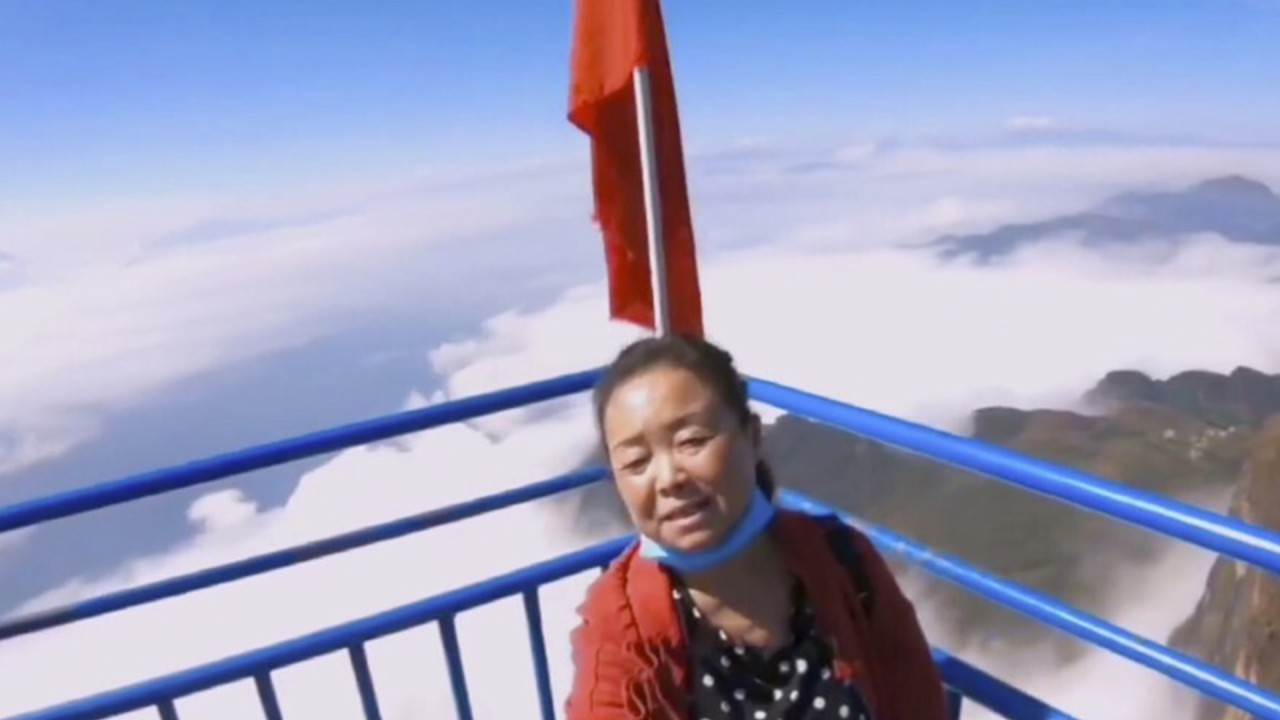
Labour Day tourism spike in China sees more people travelling than pre-pandemic levels
- Despite the positive news, experts say the industry is far from recovered from the damage caused by the coronavirus
- Purchases of car rentals in China have skyrocketed, implying people are still concerned about catching the virus
Trip.com, China’s biggest online service agency, predicts that the country will see a significant boost in the number of people on the road during the May 1-5 holiday, even compared to pre-pandemic years.
Compared to 2019, when the world was unaware of the coronavirus that causes Covid-19, bookings for air tickets rose by 23 per cent, hotel reservations increased by 43 per cent, tour bookings jumped by 114 per cent and car rentals saw a 126 per cent increase, according to Trip.com data.
Zhuang Zhimin, a tourism researcher from East China Normal University in Shanghai, told the Post that travel is viewed as a reward for a year of sometimes stringent coronavirus restrictions.
“As China’s coronavirus epidemic is not serious at all, people think their wish of travelling should be granted,” he said.
He added that the high growth rate for car rentals suggested people still had concerns about Covid-19.
“More and more people would like to drive themselves, instead of taking public transportation to travel, because they are worried about contracting the coronavirus,” Zhuang said.
Kong Linna, a Shanghai mother, said she planned to take her 10-year-old daughter to join a parent-child travel group to play on the Shengsi Archipelago in the East China Sea during the Labour Day holiday.
“We have not been outside Shanghai since the beginning of last year,” she told the Post. “Finally the time has come that we can travel freely”.
She said she did not worry about the coronavirus situation and would only take some face masks while travelling.
But statistically, Kong is an outlier, as the travel boom is being driven mainly by people without kids. Only 30 per cent of travellers said they were parents who wanted to bring children with them.

About 70 per cent of the tourists will travel far away, meaning they will leave their municipality or province, said Trip.com.
Macau is the most popular destination for tourists trying to leave mainland China. Mainland residents do not need to quarantine when arriving in the city as long as they show proof of a negative Covid-19 test. Orders for travelling to Macau for the Labor Day break at Trip.com were up 20 per cent from 2019.
Within mainland China, the top ten tourist destinations are Shanghai, Beijing, Hainan island, Guangzhou, Chengdu, Chongqing, Xian, Xiamen, Hangzhou and Shenzhen.
The most popular tourist attraction for the Labour Day holiday is Shanghai Disneyland, followed by Emperor Qinshihuang’s Mausoleum in Xian (home of the Terracotta Army), an open-range zoo called the Chimelong Safari Park in Guangzhou, a gigantic aquarium in Zhuhai called Chimelong Ocean Kingdom and the Chengdu Research Base, headquarters of China’s giant panda breeding and research operations.
We have not been outside Shanghai since the beginning of last year. Finally the time has come that we can travel freely.
The popularity of “private group” tours, referring to trips that only involve a family or couple, are also rising. Trip.com said people applying for these kind of “private groups” had risen by 533 per cent compared with 2019, despite it being, on average, almost three times as expensive as it was back then.
That being said, while these numbers should lead to some optimism, Zhuang said the tourism industry still had a long way to go before it recovered from the damage caused by the pandemic.
“The tourism industry fell off a cliff last year due to the coronavirus outbreak. It has recovered gradually since the second half of last year, but it has not reached the heights it did before the epidemic,” he said.
The pandemic may also be pushing people towards mother nature because it is open-aired and easier to social distance, said Zhuang.

By the end of Wednesday, 297 coronavirus patients were being treated on the mainland, most of whom were imported cases, according to the National Health Commission.
China’s latest coronavirus outbreak happened in Ruili, bordering Myanmar, at the end of last month. The city was soon ordered to lock down.
Last week, the Shanghai Municipal Administration of Culture and Tourism decided to remove the 75 per cent capacity cap for major tourist sites in the city as “the coronavirus situation is getting better”.


